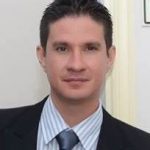

Within the CAPE-OPEN 2018 Annual Meeting, he performed a presentation (PDF, 1600 Kbytes) on the use of a MATLAB® Unit Operation (MUO) in Aspen Plus for the purpose of conducting his research project.
First, Juan addressed the need for academic researchers to integrate available progress (mathematical models) done by colleagues and students in a common research project. Indeed there might be different approaches available which are solved in different ways: equation-oriented or modular modelling, dynamic simulation or steady-state simulation, etc. Therefore, flexibility is the key target in order to increase productivity in these type of projects.
Juan’s work stands within the general research topic “Adsorptive Direct Air Capture of CO2” led by M. Sc. Carsten DRESCHLER (see for example paper published in 2018 in Computers & Chemical Engineering) at Technische Universität Dortmund. Juan’s thesis is titled “Optimal cost-based design of a highly integrated thermally coupled DAC-PTG process”. Among other tasks, Juan has to implement the existing MATLAB® model of a Direct Air Capture (DAC) unit in Aspen Plus 8.8.
Juan is making use of the MATLAB® Unit Operation (MUO) developed and provided by AmsterCHEM. The same MUO was used in another research project at Technical University of Madrid on industrial methanol from syngas.
Additionally, Juan explains several scenarios in which the CAPE-OPEN MUO showed some errors in the Aspen Plus flowsheet environment. He reported how a simple MUO representing a mixer, when used within a recycle loop would present errors because the property “flow” cannot be retrieved by the MUO from a “non-initialized” tear stream.
Moreover, he covers the implementation of the “DAC” Matlab model within the MUO. This entails nine input parameters and seven output parameters which are used for further sensitivity analysis as well as optimisation in Aspen Plus.
Juan reports that Aspen Plus simulation engine crashes all of a sudden from time to time when the DAC MUO is present in the Aspen Plus Flowsheet and exercised. When reloading the flowsheet, the DAC MUO has none of its Ports connected to streams. The solution is to start over again, reloading the configuration file of the MUO, connecting the streams and running the Flowsheet again. To diagnose the issues encountered, COLTT 2.4 was used. Analysis is underway.
Finally, Juan makes a number of requests regarding the MUO such as enabling copying and pasting in the Parameters tab of the MUO, or allowing several MATLAB file scripts to be selected and incorporated in the additional files tab, etc. AmsterCHEM acknowledged on the spot these requests and will look into them. Juan also suggests that better productivity could be obtained if improved communication through CAPE-OPEN between Aspen Plus and the MUO can be granted.
